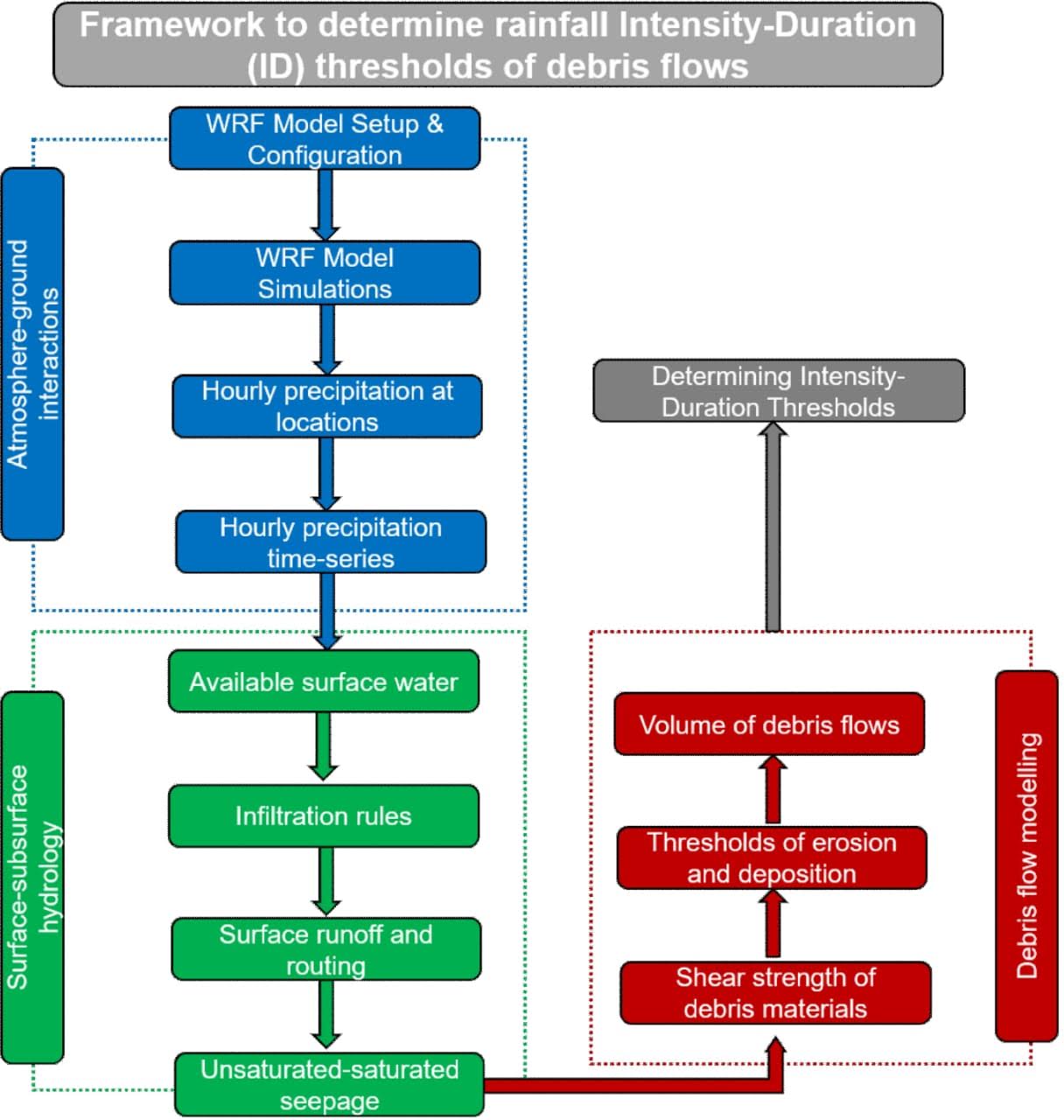Media Scan Desk
-
Towards Safer Horizons – IIT Roorkee’s Novel Model for Enhancing Himalayan Landslide Forecasting
-
Harnessing Innovation and Collaboration to Safeguard Communities Since 1847
Roorkee, India – Researchers from the Centre of Excellence in Disaster Mitigation and Management (CoEDMM) at the Indian Institute of Technology Roorkee unveiled a novel framework aimed at strengthening early warning systems for landslides triggered by rainfall in the Himalayas.
Landslides and debris flows, particularly in the Himalayan region, have long posed significant challenges, especially during extreme weather events. In response to these challenges, the collaborative efforts of experts in meteorology, hydrology, geomorphology, remote sensing, and geotechnical engineering have resulted in the development of an innovative approach that integrates meteorological modeling with numerical simulations of debris flows.
“At the core of our framework is integrating meteorological data generated by the WRF Model with numerical simulations of debris flows. This approach allows us to understand better the complex interactions between rainfall patterns and landslide dynamics.” explained Prof. S. Srikrishnan, lead researcher on the project.
The innovative framework developed by researchers at the Indian Institute of Technology Roorkee significantly enhances landslide prediction in the Himalayas. Key features include the use of the high-resolution WRF Model to analyze precipitation patterns crucial for landslide prediction, integrating an updated debris flow numerical model, and establishing specific rainfall intensity–duration thresholds through simulations. This comprehensive approach improves accuracy by considering factors such as soil moisture and past events like floods for fine-tuning. Ultimately, the framework aims to better prepare communities and mitigate the impact of landslides in the Himalayan region.

It leverages the Weather Research and Forecasting (WRF) Model to generate hourly rainfall data at a high resolution of 1.8 km × 1.8 km, providing localized insights crucial for landslide prediction. The framework incorporates an updated version of the debris flow numerical model, which meticulously considers factors like volumetric water content, moisture-content-dependent hydraulic conductivity, and seepage routines, ensuring more accurate simulations of landslide dynamics. Additionally, the model undergoes calibration using historical data from significant events such as the 2013 North India floods, aiding in the validation and refinement of its parameters. Lastly, the framework identifies rainfall intensity–duration thresholds for debris flows through parametric simulations based on various precipitation intensities, further enhancing its predictive capabilities. Given the societal impact of landslides, these advancements represent a significant leap forward in disaster preparedness endeavors, specifically targeting the reduction of geohazard impacts in the Himalayan region.
This pioneering effort, led by researchers from IIT Roorkee Mr. Sudhanshu Dixit, Prof. S. Srikrishnan, Prof. Piyush Srivastava, and Prof. Sumit Sen in collaboration with experts from IISER Mohali Prof. Yunus Ali Pulpadan, and Dr. Tapas Ranjan Martha from the National Remote Sensing Centre (NRSC), Indian Space Research Organisation (ISRO), seeks to enhance territorial landslide early warning systems (Te-LEWSs) in the Himalayas. The framework aims to contribute to better regional disaster preparedness by providing more refined thresholds that can predict landslide events. This research is funded by the Indian Space Research Organisation (ISRO) Disaster Management Support Program (DMSP) through the Indian Institute of Remote Sensing (IIRS).
Director of IIT Roorkee, Prof. K. K. Pant, expressed enthusiasm about the research outcomes, stating, “The collaborative efforts of our researchers exemplify the spirit of innovation and interdisciplinary cooperation that defines IIT Roorkee. This groundbreaking framework holds immense promise in bolstering disaster preparedness efforts not only in the Himalayan region but potentially across India.”
The research team’s findings are detailed in a paper titled “Numerical-model-derived intensity–duration thresholds for early warning of rainfall-induced debris flows in a Himalayan catchment,” published in Natural Hazards and Earth System Sciences.
The innovative framework developed by researchers at the Indian Institute of Technology Roorkee (IIT Roorkee) marks a significant milestone in enhancing landslide early warning systems in the Himalayas. Rooted in a tradition of excellence dating back to 1847, IIT Roorkee has continually spearheaded transformative research endeavors, exemplifying its commitment to societal welfare. With a rich history of pioneering social initiatives and contributions across diverse domains, IIT Roorkee stands at the forefront of addressing pressing challenges, such as disaster mitigation and management. This latest endeavor underscores the institution’s enduring legacy of innovation and interdisciplinary cooperation, further solidifying its role as a leader in advancing knowledge and fostering positive societal impact.





